Gemini 3 vs 2.5: Key Upgrades That Improve Learning in 2025

TL;DR: Gemini 3 is Google's most advanced multimodal AI yet, upgrading Gemini 2.5 with stronger multi-step reasoning, clearer interpretation of messy images and diagrams, richer video understanding, and more reliable long-context dialogue. It also introduces deeper agentic abilities for coding, problem-solving, and tool workflows. Available across the Gemini app, Search, Cloud, and developer tools, Gemini 3 is designed to deliver more accurate, coherent, and helpful assistance across academic, coding, and multimodal tasks.
Artificial intelligence is increasingly central to how students learn, practice, and explore STEM subjects. Google's Gemini family has been a major player in the multimodal AI field, and the recent release of Gemini 3 represents a clear generational step from Gemini 2.5. This article explains what changed in Gemini 3, compares the two models on the capabilities that matter for education, and briefly notes how learning platforms can benefit.
Quick recap: what Gemini 2.5 offered
Gemini 2.5 established a strong baseline for multimodal assistance with capabilities such as:
- Handling text inputs accurately across a wide range of subjects
- Processing images and diagrams to a practical degree
- Offering reliable coding assistance and debugging support
- Providing solid reasoning for many classroom and homework tasks
- Supporting everyday learning workflows like homework help and diagram interpretation

However, users and developers also noted several limitations:
- Multi-step reasoning could break down on complex or lengthy problems
- Messy or handwritten images were sometimes misread
- Long, multi-part conversations could lose context and coherence
These limitations shaped the key objectives for Gemini 3's improvements.
What Gemini 3 is (high-level)
Google positions Gemini 3 as its most capable model to date, spanning variants such as Gemini 3 Pro and a stronger reasoning mode often labeled Deep Think. The release focuses on three major upgrade pillars:
- Deeper, more reliable reasoning
Stronger multi-step logic handling, better chain-of-thought consistency, and improved stability for complex problem-solving.
- Richer multimodal understanding
Upgraded perception across video, images, charts, technical diagrams, and long multimodal inputs.
- Agentic and tool-oriented workflows
Enhanced coding agents, tool calling, planning abilities, and multi-step execution for developer and productivity tasks.

Google's official documentation highlights that Gemini 3 is available across:
- the Gemini app,
- Google Search integrations,
- Vertex AI / Google Cloud,
- broader developer tooling.
Core upgrades in Gemini 3 (what's new)
Before diving into each upgrade, it's helpful to understand how Google frames Gemini 3 as a step-change rather than a routine iteration. Across reasoning, multimodality, and agent-like workflows, the model introduces improvements that directly address the practical limitations seen in Gemini 2.5. The sections below break down these advances one by one.
1、Stronger, more systematic reasoning
Gemini 3 is explicitly engineered for improved reasoning. Google reports that Deep Think mode pushes capability on hard benchmarks and novel problem types, delivering more consistent multi-step solutions and fewer logic gaps than prior models. That means tasks like multi-step algebra problems, geometry proofs, and structured scientific reasoning show real accuracy gains in internal evaluations. (Google provides benchmark results and highlights Deep Think's performance improvements.)

(Table Image Sources: Google product & developer pages)
Why this matters for learners: more trustworthy step-by-step explanations and fewer wrong intermediate steps — the AI behaves more like a careful tutor.
2、Much stronger multimodal understanding (images, diagrams, video)
Gemini 3 improves image interpretation (handwritten notes, textbook photos, charts, and diagrams) and extends capabilities toward video understanding and multi-file inputs. Google's developer and cloud announcements describe the model's ability to analyze text, video, and files together for richer applications (for example: extracting steps from a short lecture clip, summarizing slides, or reading lab charts). This is a meaningful upgrade over Gemini 2.5's more limited video and complex-diagram handling.
Why this matters for learners: students can use photos of notes, screenshots of textbooks, or short lecture clips with higher confidence that the model will interpret structure and labels correctly.
3、Better long-context handling and dialogue stability
Google's materials note improved document-level reasoning: Gemini 3 sustains coherence across longer inputs and multi-turn conversations better than earlier releases. That includes preserving definitions or constraints introduced earlier in a session and summarizing multi-page content more reliably. For extended study sessions or multi-step assignments, this reduces the need to constantly restate context.
Why this matters for learners: better continuity across lessons, multi-problem homework, or long-form explanations.
4、Agentic workflows and "vibe coding" improvements (tools + Antigravity)
Gemini 3 is positioned as an "agentic" model optimized for tool use. Google launched Antigravity, an agent-first development environment that demonstrates multi-agent workflows and tight editor/terminal/browser integration driven by Gemini 3 Pro. The developer materials highlight improved terminal/tool benchmarks and more reliable tool orchestration, which translates to better programmatic reasoning and automated task handling.
Why this matters for learners: coding tutors and project assistants can act — more reliably — like a helper that runs tests, debugs, and suggests edits.
5、Lower hallucination rates and more grounded outputs
According to Google's release, Gemini 3 benefits from stronger grounding techniques and evaluation protocols that reduce fabrication. That does not eliminate errors, but test and usage reports show fewer instances of made-up facts or invented solution steps compared with older models.
Why this matters for learners: reduced misinformation means higher trust when using the model for homework or explanations.
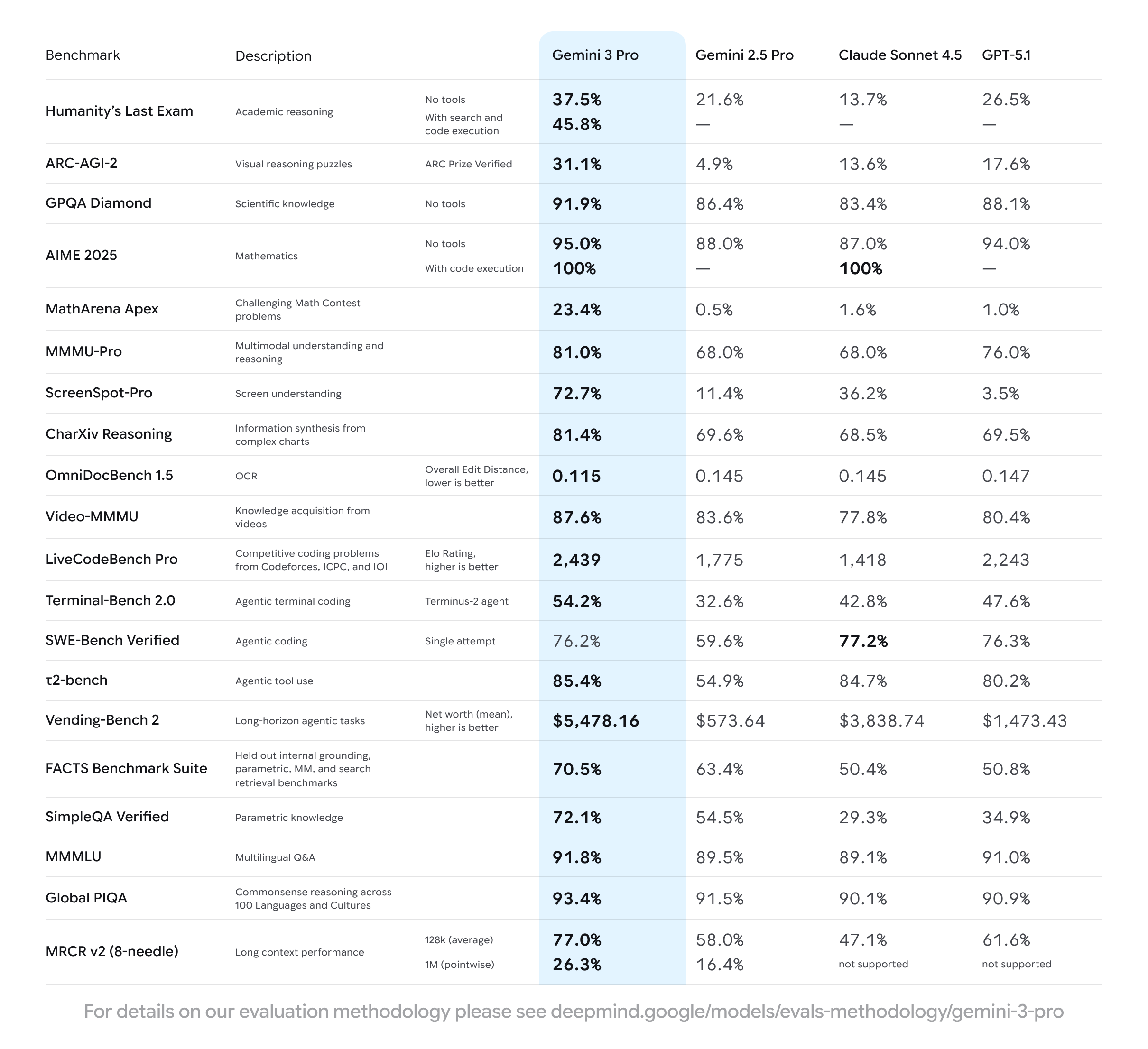
(Table Image Sources: Google product & developer pages)
Side-by-side comparison: Gemini 2.5 vs. Gemini 3

(Sources: Google product & developer pages; Antigravity announcement.)
Concrete learning scenarios — before vs. after
Below are example scenarios to illustrate how Gemini 3 improves real student workflows compared with Gemini 2.5.
Scenario A — Photo of a handwritten calculus exercise
- Gemini 2.5: Often extracts the equation correctly but may misread faint symbols or skip reasoning steps.
- Gemini 3: More reliable at reading handwriting and preserving step-by-step symbolic manipulation; better at explaining why each transformation is valid. (Improved vision + reasoning.)
Scenario B — Interpreting a physics lab graph and answering conceptual questions
- Gemini 2.5: Interprets basic trends but sometimes misses axis units or mislabels series.
- Gemini 3: Better at reading axes, extracting data points, and tying the visual data back to conceptual physics reasoning. (Enhanced multimodal + document reasoning.)
Scenario C — Debugging a student's Python function with unit tests
- Gemini 2.5: Helps locate obvious bugs but can struggle with multi-file or multi-step test scenarios.
- Gemini 3: With agentic tool support and improved code reasoning, it can run through test logic, suggest targeted fixes, and explain why the fix works. (Agentic + coding improvements.)
Availability and product context (what's released and where)
Google's announcements show Gemini 3 being introduced across multiple surfaces:
- Gemini app & Google Search — the model is being integrated into the consumer-facing Gemini app and Google Search experiences to power richer, generative interfaces.
- Developer & enterprise platforms — Gemini 3 Pro and related tools are available via Google's developer channels (AI Studio, Vertex AI / Cloud) and CLI/dev integrations for building applications.
- Antigravity — a public-preview agentic IDE demonstrates agent orchestration and deeper tool use centered on Gemini 3 Pro.
Note: Access models and specific feature availability can vary (preview vs. general availability, paid tiers, region). For the latest access details, check Google's official product pages.
Practical considerations for educators and students
1、Verification still matters
Although hallucination rates are reduced, students and teachers should verify key results (especially proofs, numerical answers, or research claims).
2、Quality of inputs affects output
High-quality photos, clear problem statements, and accurate context still produce the best results.
3、Privacy and data handling
When uploading assignments or images, be mindful of privacy policies for the app or product you use (Gemini app, third-party tools, or enterprise deployments). Official enterprise docs discuss file and data handling in Cloud/Vertex contexts.
4、Tool integration opens new workflows
Agentic tools like Antigravity show how AI can become an active partner in coding and project workflows — a capability that will filter to educational tooling over time.
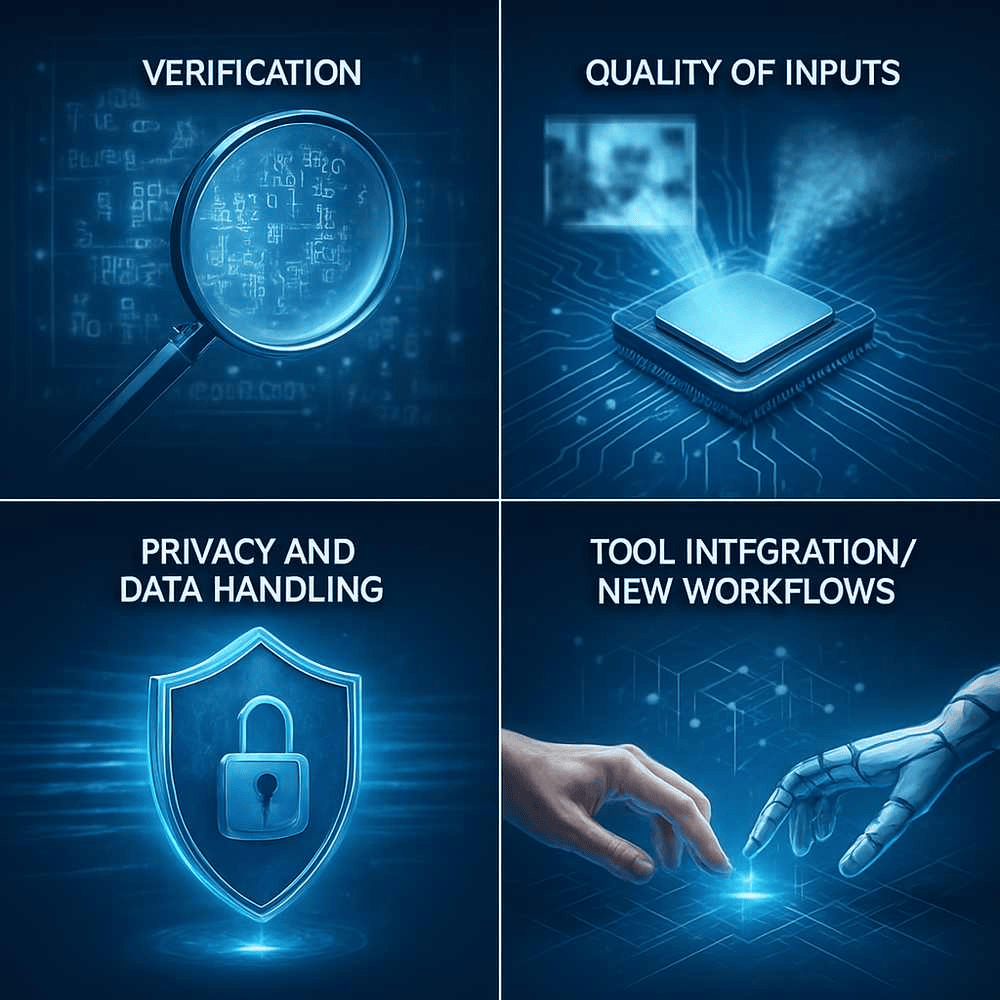
Short note: how learning platforms like GoMim benefit
Gemini 3's upgrades — stronger stepwise reasoning, improved diagram and image understanding, and more coherent long-context handling — directly raise the ceiling for AI-driven math tutoring. Platforms that provide photo-to-solution workflows, multi-language explanations, and step-by-step pedagogical responses can use Gemini 3 to improve accuracy and explanation quality.
For example, an AI math tool that accepts photographed homework, explains each algebraic step, and preserves multi-turn tutoring context will deliver noticeably better learning experiences when its back-end reasoning model is Gemini 3 (or leverages Gemini 3 capabilities). Integration choices, verification layers, and UI design remain critical to converting model capability into safe, reliable learning outcomes.
Conclusion
Gemini 3 is a clear generational upgrade over Gemini 2.5: it brings stronger multi-step reasoning, richer multimodal (image + video) understanding, improved long-context stability, and enhanced tool/agent capabilities. These advances make it more useful and reliable for real learning scenarios — from step-by-step math tutoring to video-based lessons and project-based coding help. For educators and edtech builders, Gemini 3 expands what intelligent tutoring systems can do; for students, it means clearer, more dependable AI assistance.
Recent Posts

Discover the best Overleaf alternatives in 2025 — from LaTeX editors to document automation tools — for better collaboration, flexibility, and workflo

Have you ever been stuck on a tough math problem late at night, wishing there was someone to guide you through it? You'r...Try it free now

Advanced Placement (AP) is a program created by the College Board in the United States that offers college-level curricu...Try it free now
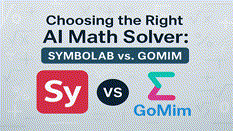
In today's digital age, selecting the right mathematical tool is essential for students, educators, and professionals al...Try it free now
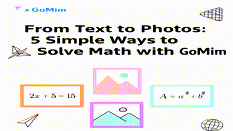
Whether you're new to GoMim or have been using it for a while, you may not have fully explored everything it can do. GoM...Try it free now
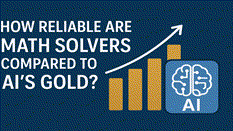
In July 2025, artificial intelligence achieved a landmark moment: Google DeepMind's Gemini Deep Think and an advanced ex...Try it free now
Table of Contents
- Quick recap: what Gemini 2.5 offered
- What Gemini 3 is (high-level)
- Core upgrades in Gemini 3 (what's new)
- Side-by-side comparison: Gemini 2.5 vs. Gemini 3
- Concrete learning scenarios — before vs. after
- Availability and product context (what's released and where)
- Practical considerations for educators and students
- Short note: how learning platforms like GoMim benefit
- Conclusion
Your Personal AI Math Tutor
instant problem-solving, step-by-step explanations, personalized learning paths, and visual aids
AI Math SolverLearn math smarter on GoMim
Try GoMim Free - The Most Advanced AI Math Solver!
Join thousands of students using GoMim for math learning and problem -solving.
